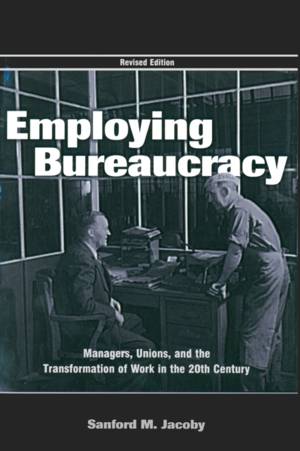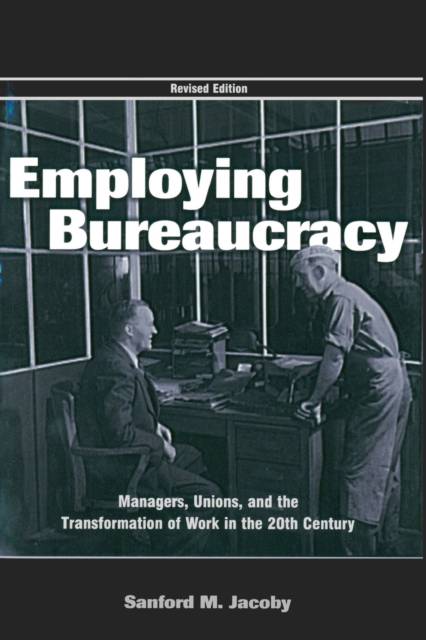
Bedankt voor het vertrouwen het afgelopen jaar! Om jou te bedanken bieden we GRATIS verzending aan op alles gedurende de hele maand januari.
- Afhalen na 1 uur in een winkel met voorraad
- Gratis thuislevering in België
- Ruim aanbod met 7 miljoen producten
Bedankt voor het vertrouwen het afgelopen jaar! Om jou te bedanken bieden we GRATIS verzending aan op alles gedurende de hele maand januari.
- Afhalen na 1 uur in een winkel met voorraad
- Gratis thuislevering in België
- Ruim aanbod met 7 miljoen producten
Zoeken
Employing Bureaucracy
Managers, Unions, and the Transformation of Work in the 20th Century, Revised Edition
Sanford M Jacoby
€ 74,45
+ 148 punten
Uitvoering
Omschrijving
Deftly blending social and business history with economic analysis, Employing Bureaucracy shows how the American workplace shifted from a market-oriented system to a bureaucratic one over the course of the 20th century. Jacoby explains how an unstable, haphazard employment relationship evolved into one that was more enduring, equitable, and career-oriented. This revised edition presents a new analysis of recent efforts to re-establish a market orientation in the workplace. This book is a definitive history of the human resource management profession in the United States, showing its diverse roots in engineering, welfare work, and vocational guidance. It explores the recurring tension between the new professional order and traditional line management. Using a variety of sources, Jacoby analyzes the complex relations between personnel managers, labor unions, and government from the late 19th century to the present. Employing Bureaucracy:
*analyzes the origins of the modern employment relationship's distinctive features;
*combines a variety of disciplinary perspectives, from business and labor history to economics, sociology, and management;
*shows the transformation of the American workplace over the course of the 20th century, from market-oriented to bureaucratic to recent efforts to move back to a market orientation; and
*provides the single-best and most sophisticated history of the origins and development of the modern "HR" profession. For historians, social scientists, and practitioners, this book is a readable and rewarding study. With the future of work currently under debate, it is critical that the historical process that produced the modern American workplace is understood. Read the Workforce Management Magazine review about Employing Bureaucracy at www.erlbaum.com.
*analyzes the origins of the modern employment relationship's distinctive features;
*combines a variety of disciplinary perspectives, from business and labor history to economics, sociology, and management;
*shows the transformation of the American workplace over the course of the 20th century, from market-oriented to bureaucratic to recent efforts to move back to a market orientation; and
*provides the single-best and most sophisticated history of the origins and development of the modern "HR" profession. For historians, social scientists, and practitioners, this book is a readable and rewarding study. With the future of work currently under debate, it is critical that the historical process that produced the modern American workplace is understood. Read the Workforce Management Magazine review about Employing Bureaucracy at www.erlbaum.com.
Specificaties
Betrokkenen
- Auteur(s):
- Uitgeverij:
Inhoud
- Aantal bladzijden:
- 334
- Taal:
- Engels
- Reeks:
Eigenschappen
- Productcode (EAN):
- 9780805844108
- Verschijningsdatum:
- 3/02/2004
- Uitvoering:
- Paperback
- Formaat:
- Trade paperback (VS)
- Afmetingen:
- 157 mm x 235 mm
- Gewicht:
- 444 g

Alleen bij Standaard Boekhandel
+ 148 punten op je klantenkaart van Standaard Boekhandel
Beoordelingen
We publiceren alleen reviews die voldoen aan de voorwaarden voor reviews. Bekijk onze voorwaarden voor reviews.












